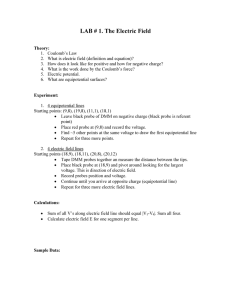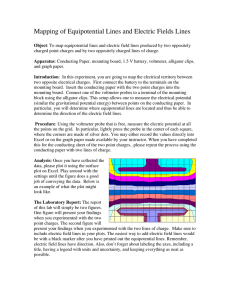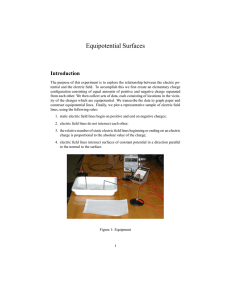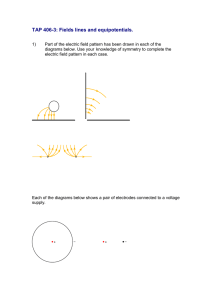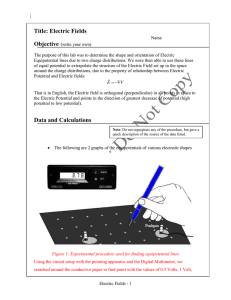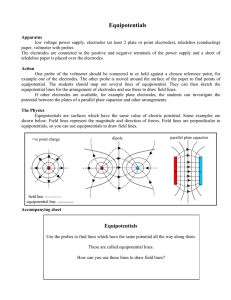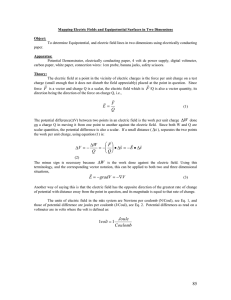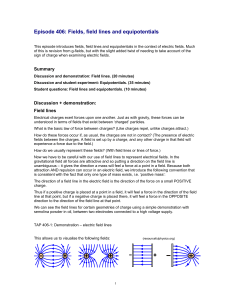lab instructions
advertisement
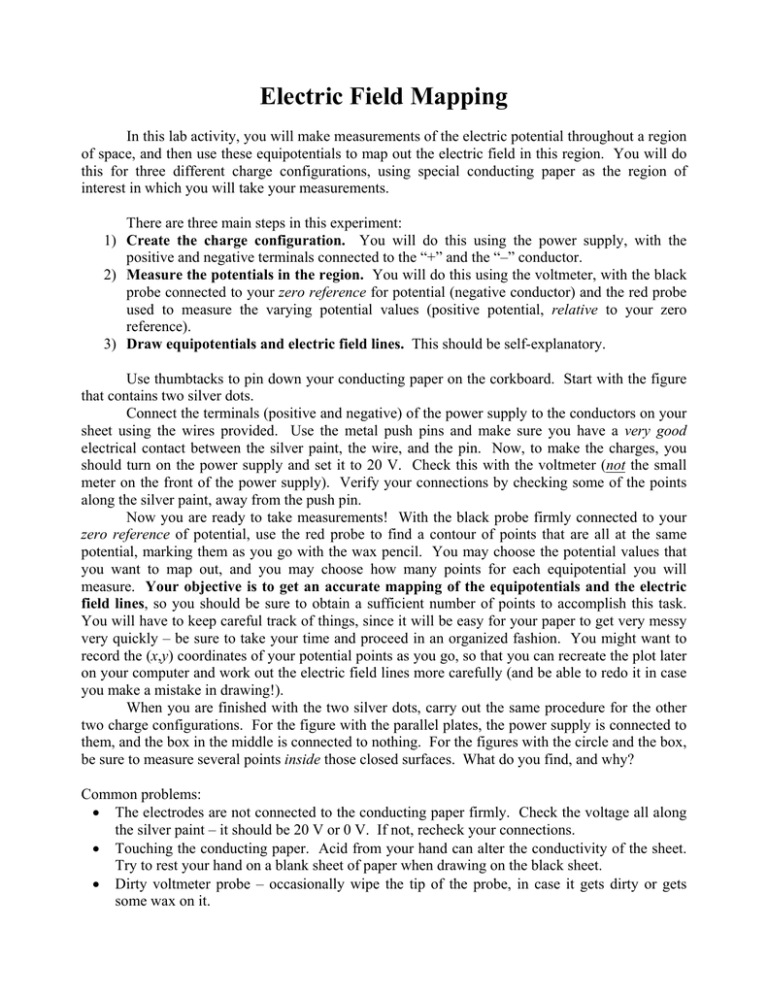
Electric Field Mapping In this lab activity, you will make measurements of the electric potential throughout a region of space, and then use these equipotentials to map out the electric field in this region. You will do this for three different charge configurations, using special conducting paper as the region of interest in which you will take your measurements. There are three main steps in this experiment: 1) Create the charge configuration. You will do this using the power supply, with the positive and negative terminals connected to the “+” and the “–” conductor. 2) Measure the potentials in the region. You will do this using the voltmeter, with the black probe connected to your zero reference for potential (negative conductor) and the red probe used to measure the varying potential values (positive potential, relative to your zero reference). 3) Draw equipotentials and electric field lines. This should be self-explanatory. Use thumbtacks to pin down your conducting paper on the corkboard. Start with the figure that contains two silver dots. Connect the terminals (positive and negative) of the power supply to the conductors on your sheet using the wires provided. Use the metal push pins and make sure you have a very good electrical contact between the silver paint, the wire, and the pin. Now, to make the charges, you should turn on the power supply and set it to 20 V. Check this with the voltmeter (not the small meter on the front of the power supply). Verify your connections by checking some of the points along the silver paint, away from the push pin. Now you are ready to take measurements! With the black probe firmly connected to your zero reference of potential, use the red probe to find a contour of points that are all at the same potential, marking them as you go with the wax pencil. You may choose the potential values that you want to map out, and you may choose how many points for each equipotential you will measure. Your objective is to get an accurate mapping of the equipotentials and the electric field lines, so you should be sure to obtain a sufficient number of points to accomplish this task. You will have to keep careful track of things, since it will be easy for your paper to get very messy very quickly – be sure to take your time and proceed in an organized fashion. You might want to record the (x,y) coordinates of your potential points as you go, so that you can recreate the plot later on your computer and work out the electric field lines more carefully (and be able to redo it in case you make a mistake in drawing!). When you are finished with the two silver dots, carry out the same procedure for the other two charge configurations. For the figure with the parallel plates, the power supply is connected to them, and the box in the middle is connected to nothing. For the figures with the circle and the box, be sure to measure several points inside those closed surfaces. What do you find, and why? Common problems: • The electrodes are not connected to the conducting paper firmly. Check the voltage all along the silver paint – it should be 20 V or 0 V. If not, recheck your connections. • Touching the conducting paper. Acid from your hand can alter the conductivity of the sheet. Try to rest your hand on a blank sheet of paper when drawing on the black sheet. • Dirty voltmeter probe – occasionally wipe the tip of the probe, in case it gets dirty or gets some wax on it. Below are the 3 conducting patterns on which you will trace equipotential lines in the lab. Before coming to the lab, draw what you predict will be the equipotential and field lines for each one. On the fourth picture, draw your own conducting pattern, for which you will measure the equipotential lines in the lab. (the dots are on a 1 cm grid.)

